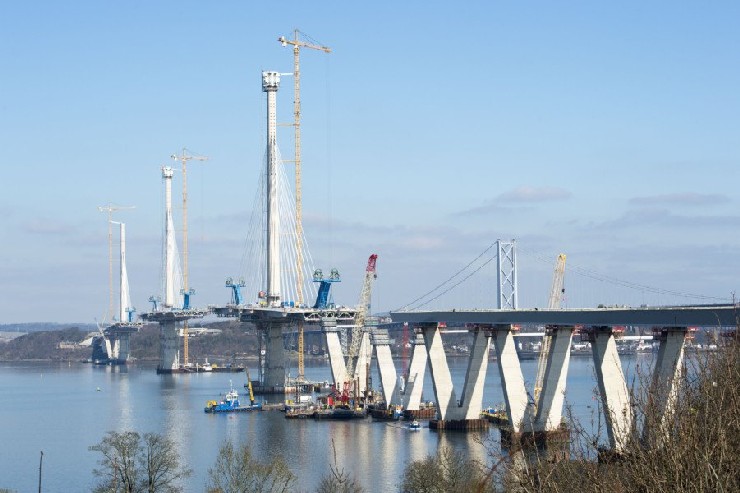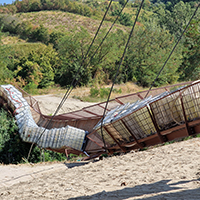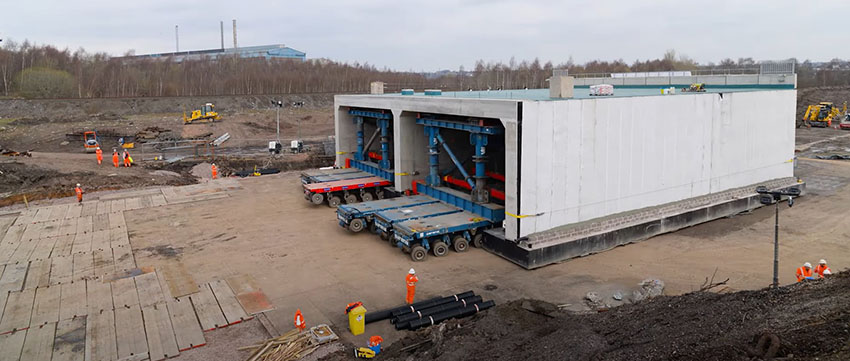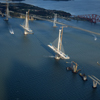Despite the delay, the bridge is still due to open ahead of the contractual completion date.
The contract runs until June 2017 and, until recently, the target of opening in December 2016 was considered challenging but still achievable. The new plan is to open the bridge by May 2017.
Forth Crossing Bridge Constructors (FCBC) – the consortium building the bridge – has informed ministers about how the ongoing effects of the weather have resulted in the need for more time to complete the bridge.
Since September 2015, the downtime due to adverse weather - specifically wind - has been 40%, compared to the 25% anticipated by the contractor. FCBC had believed that it could mitigate these effects but a further 25 days were lost to the weather during April and May; the December 2016 target can no longer be delivered.
FCBC had been able to mitigate earlier impacts of weather by increasing resources and running a number of activities in parallel. Measures taken included increasing staffing by taking on an additional 100 workers, increased working hours, altering construction methodologies where possible and challenging critical construction sequences to identify where any programme efficiencies could be found.
However, construction is now entering a particularly complex stage and, as a result, further additional resources would not bring the delivery date forward. In addition, the remaining construction activities can only be carried out sequentially, limiting the ability to make further gains.
The bridge deck and cable installation process, which began in September 2015, is particularly sensitive to wind and this increases as the cables become longer and are installed at a greater height.
FCBC has confirmed this creates an unavoidable knock-on effect for subsequent activities, road surfacing and wind barriers, which will now take place in wet and cold conditions during autumn and winter 2016/2017.
The Scottish government's cabinet secretary for economy, jobs and fair work, Keith Brown, said: “We will continue to work closely with the contractors and I will personally ensure that every pressure and every resource is brought to bear to deliver or even better the revised target date of May 2017. Going forward, in order to ensure that this project remains on track, I have implemented enhanced governance procedures from Transport Scotland senior management and will receive twice weekly updates from the project team.
“We have always been ambitious about this project and have always worked towards a deliberately ambitious target. However, it is important to recognise that FCBC still fully expects the project to complete within the timeframe of their contract. This project is not late and there will be no impact on the public purse.”
The US$1.96bn crossing will be the world's longest three-tower cable-stayed bridge. It crosses the Firth of Forth alongside the Forth Road Bridge (FRB), which is itself next to the Forth Bridge.
The December 2016 target date had originally been set to address concerns about the long-term condition of the FRB. These concerns have proven to be less immediate and the recently installed structural health monitoring system is providing assurance on the ability of the FRB to sustain traffic, said Brown. “However that hasn’t decreased our determination to complete this once in a generation project at the earliest opportunity," he added.
The north and south road networks are nearing completion, pouring of the concrete deck on the viaducts is well under way and nearly 70% of the bridge deck is in place.

The final deck lift is now expected in the late autumn which will then be followed by the complex process of final closures between the three tower fans and two viaducts. This involves the fine-tuning of the entire structure including all 21,192 strands of all 288 cables to ensure the correct final loading and geometry is achieved.
Subscribe or sign in to read the article about the construction of the Queensferry Crossing in the latest issue of Bridge design & engineering.





